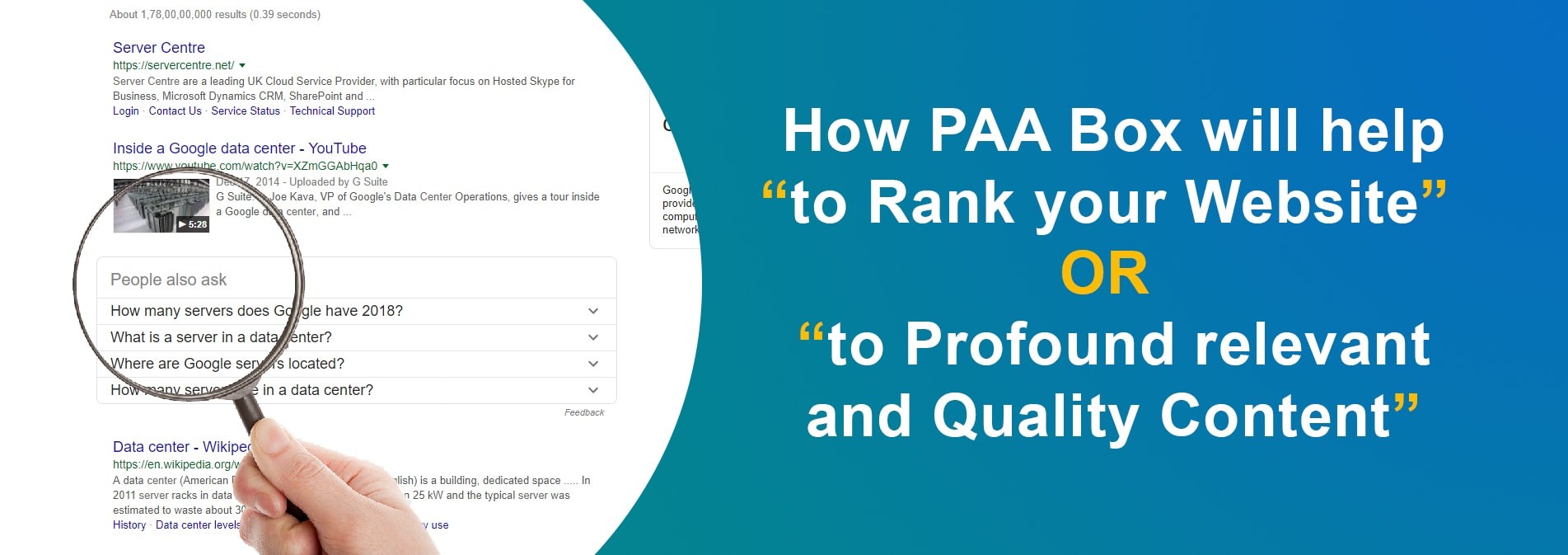With the year 2017 almost coming to an end and we are about to enter into 2018, it is not wise to brood upon yesteryear’s SEO ranking factors owing to the fact that the algorithms set forth by Google changes on a frequent basis. Of course, your focus should be on ways to make your site rank higher in search engines like Google to ensure that your online business is in the path of success. In this regard, you can enhance your SEO efforts by incorporating improvements in some of the common SEO ranking factors. These include changing your site from ‘HTTP’ to ‘HTTPS’ by way of obtaining SSL (Secure Sockets Layer) certificate, checking the mobile-friendliness of the site and website speed, and many such. In fact, well-known firms like ServerCenter Search Engine Optimization offer expert guidance for the customers in this matter.
Incorporating HTTPS – Securing a SSL Certificate
At an annual conference held in 2014, Google gave a hint that it will consider HTTPS as a ranking signal as far as the websites are concerned. This fact has led to many speculations regarding the necessity of SSL certificates. SSL refers to the security-related technology which is used to establish an encrypted link between a browser and a web server. In fact, this link ensures that the entire data transfer between the browser and the server remains private. The connection thus established is regarded as secure because no one except you and the site which submits the concerned information can access the details you provide to the browser.
SSL and HTTPS

It is very common for Internet users to get confused between SSL and HTTPS as they are often used on an interchangeable basis. SSL, as discussed above, is the certificate which safeguards the connections as well as data transfer between a browser and a web server. On the other hand, HTTPS refers to the encryption which gets displayed in the web browser with a padlock symbol and a green-colored address bar. This icon would be on the left or right side of the address bar depending on the kind of browser used, and when clicked, you can receive more information about the website as well as the company which provided the SSL certificate. Further, SSL and HTTPS represent the two sides of the same technology which deals with website security.
To put it as an equation:
HTTP (Hypertext Transfer Protocol) + SSL = HTTPS (Hypertext Transfer Protocol Secure)
In fact, HTTPS makes it difficult for hackers to break the connection and get hold of personal information including credit card numbers, passwords, addresses, etc.
While the main purpose of SSL is collecting information between the visitor and your website, there are benefits of SEO as well. As per Google officials, SSL has already become part of the search engine ranking algorithm. For obtaining a SSL certificate for a particular website, the initial step is to decide on the kind of certificate you require. In most of the cases, a standard SSL certificate covers your entire content. However, for companies which fall under the regulated category like insurance, finance, etc. the specific requirements may vary.
The cost of obtaining a SSL certificate is on the higher side if calculated in a yearly basis. However, some first-rate providers like Server Center offer it for free. While securing a SSL certificate, it is important to consider the validity period of the same. Most of the SSL certificates would be valid for one or two years by default.
Possessing a SSL certificate for your website has become quite essential today because if you do not have one, it is certain that Google flags the concerned site. Online security has gained much importance with the users depending on Internet for almost anything. Google is devising many strategies to make the users feel secure on the Internet, and SSL certificate and HTTPS are part of it. Social media giants like Facebook also conveys the same message. In fact, it has announced that every application should have a secure connection with HTTPS which is validated using SSL certificate. However, the application without SSL certificate would not get updated to ‘live’ status until it is migrated to HTTPS.
Pros and Cons of SSL Certificates
Though SSL certificates offer data integrity, authentication, and confidentiality, it comes with a mixed set of pros and cons.
Let us have a look at the pros of SSL certificates:
1. Encrypts Sensitive Information
2. Protects Against Phishing Attacks
A phishing email contains a link to an identical copy of the actual site. When you use data like username, passwords, etc. on this site, it could be accessed by unauthorized elements. If you have a SSL certificate, it prevents this unauthenticated access.
3. Improves Trust
As per several studies, a majority of the customers think twice before making online transactions owing to privacy concerns. With HTTPS, such issues could be solved. Further, displaying trust seals in online shops helps to boost conversion rates considerably.
4. Offers Better Search Engine Rankings
Google recently added HTTPS as a search engine ranking signal. In other words, if a particular website is HTTPS-enabled, then it will be given preference over other sites which are insecure as far as search engine rankings are concerned.
Now let us discuss about the cons of having SSL certificates:
1. Technical Complications
Though SSL configuration is quite simple for a tech savvy person, it can sometimes be complicated for others. This is especially true in the case of multi-domain SSL certificates where there are chances of errors. In fact, including the HTTPS tag on all web pages may not be easy and requires considerable expertise.
2. Mobile Configuration is Not So Easy
SSL certificates are mainly intended for website security, and therefore, the mobile devices may not have been included. In fact, as the number of people using mobile devices have increased today, the web owners have to make use of third-party applications or develop in-house applications additionally to make sure that the websites are functioning the same way as mobile devices.
3. Slowdown of Connection During a Transaction
When a transaction is carried out on a site which possesses SSL certificate, it involves both encryption as well as decryption of data which gets transferred mutually. Owing to this, the connection slows down.
In short, it is clear that SSL comes with a number of advantages and not so prominent disadvantages. If you have not set up your website to function in the HTTPS format, it is advisable to carry out the same. It will prove to be beneficial with regard to website security as well as search engine rankings.
Another prominent SEO ranking factor is mobile-friendliness of the site as well as site speed. Let us get on to the details of the same.
Mobile-friendly Site and Site Speed

Today a majority of the searches are happening over mobile devices. For this reason, these gadgets tend to generate an increase in the number of page views. If your site is not mobile-friendly, the users do not stay there for long. In fact, about half of the mobile users abandon a site if it takes more than three seconds to load. So, it would be better to address this issue sooner than later.
A site is regarded as mobile-friendly if it loads in a proper fashion on various mobile devices like tablets, smartphones, etc., and possess great speed while loading pages. Further, it should offer easy readability of the content as well as navigability. Above all, it could be easily identified by the search engines.
As discussed above, site speed plays an important role for a site to be treated as mobile-friendly. In fact, it determines whether you could achieve higher rankings in Google search engine results pages. A slow loading site ultimately results in a slower rate in crawling, and owing to this reason, Google indexes pages on your site at a snail’s pace. Further, increasing your site speed leads to securing organic traffic to your site and better search engine rankings as well. Another benefit of having a faster site is related to better user experience.
As Google has decided to use the mobile version of a certain site to determine its rankings, if your website does not comply with the standards related to mobile-friendliness, you will face difficulty in obtaining better rankings as far as the search engine results are considered. In fact, it would be advisable to use a responsive design for your site which works fine for both websites as well as mobile devices. Here, your site would have only a single URL (Uniform Resource Locator) which makes it easier for Google to identify and index it.
Mobile-first Index

Google has announced that it may be rolling out the mobile-first index update in 2018. In fact, this update is expected to be a heavy blow for websites which are not mobile-friendly. Implementing this philosophy makes much sense because more and more searches take place through the mobile devices than on desktops. When the update comes to a reality, the content as well as the links of your mobile site, along with other factors including site speed, user experience, etc., would become significant drivers with respect to the search engine visibility of your site.
The mobile-first index is considered as a deviation from the normal indexing pattern of Google. In the current situation, Google examines the desktop version of a website and then decides on how it will rank the mobile site. Once the mobile-first index update is in full swing, it would be the other way round.
To determine if your site is mobile-friendly, you need to check the mobile version of the website and verify whether the content available on the desktop version is visible on the same. In fact, it should offer a consistent experience for the users regardless of the device from which they access the site. This holds especially true for the content present on the actual website. In other words, your content should be accessible from any device. Further, along with the content present on a particular page, you need to ensure that the headings (h1, h2, etc.) as well as the titles are not missing, and present in the same format as you want them to be. As discussed above, site speed also needs to be checked in order to give a positive experience for the users.
In short, the web owners need to get smarter by investing their time on making the site mobile-friendly, which will benefit them in the long run.
 Free Express Shipping
Free Express Shipping


























